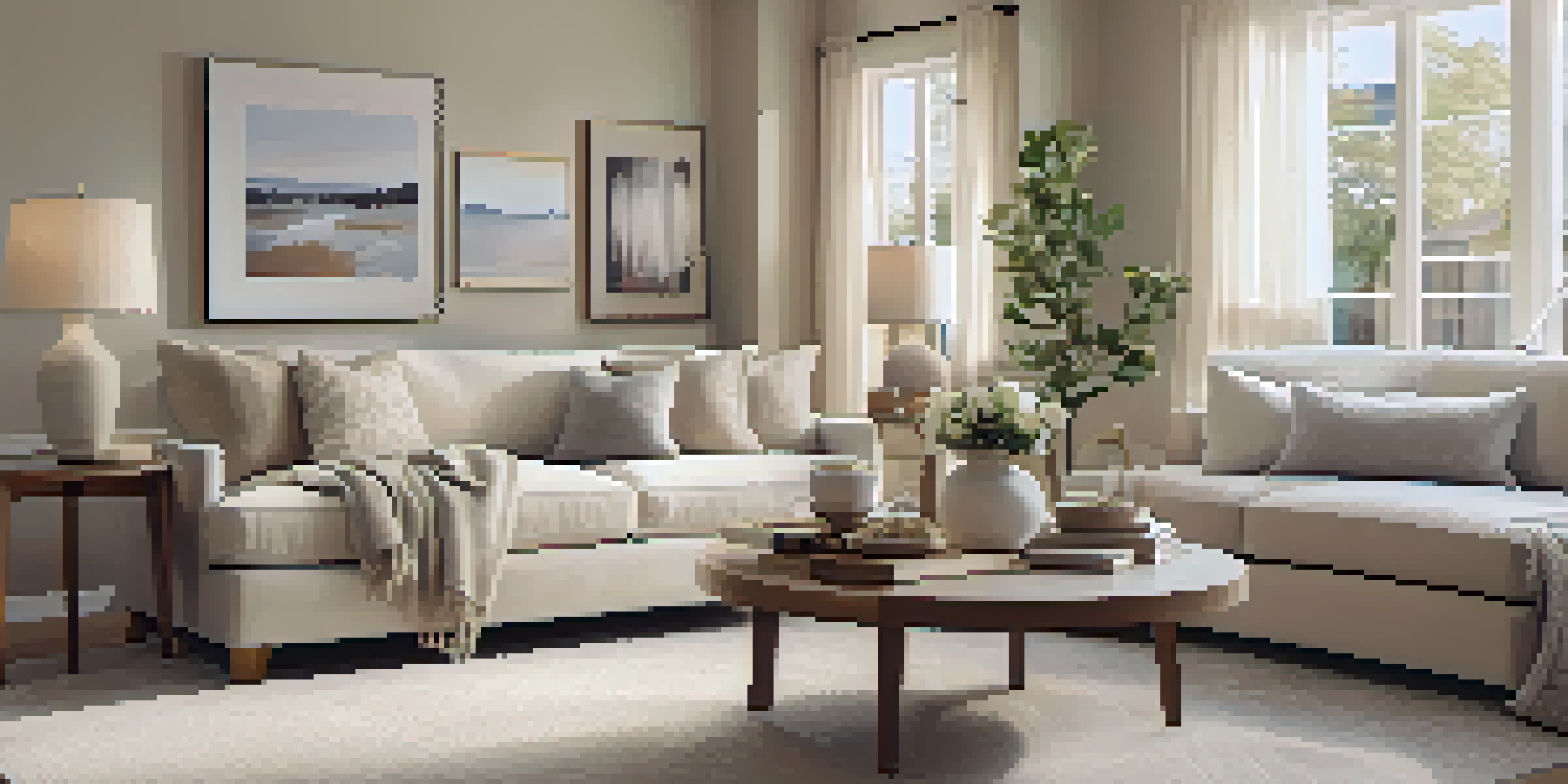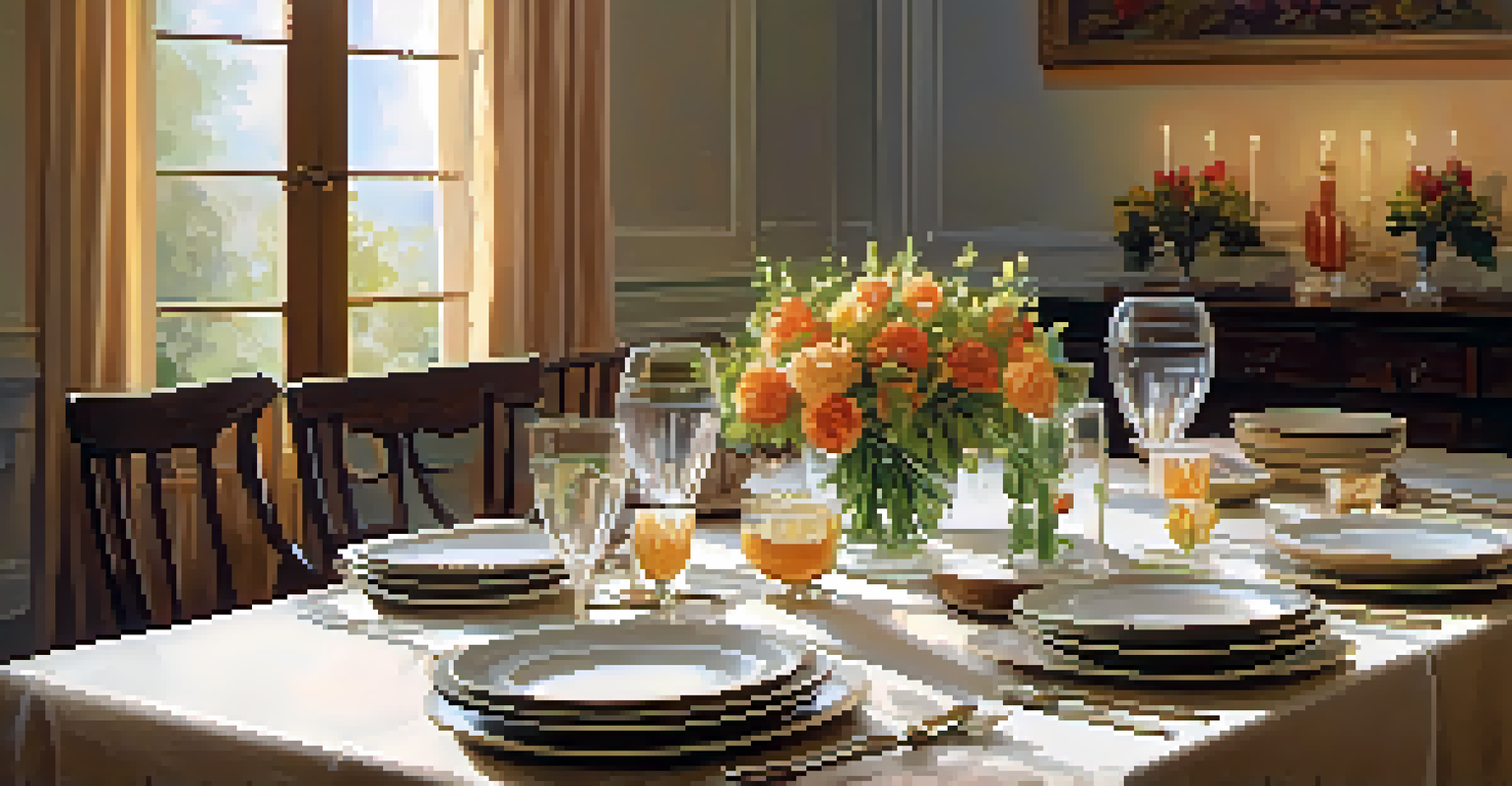The Psychological Effects of Home Staging on Buyers

Understanding Home Staging and Its Purpose
Home staging is the art of preparing a property for sale to make it more appealing to potential buyers. It involves decorating, arranging furniture, and enhancing the overall aesthetics of a home. The primary purpose of staging is to create a welcoming atmosphere that allows buyers to envision themselves living in the space.
Your home is living space, not storage space.
When buyers walk into a staged home, they often experience an emotional reaction that can significantly influence their perception of the property. A well-staged home can evoke feelings of comfort, warmth, and even aspiration, which makes it easier for buyers to imagine creating their ideal life within those walls.
Ultimately, staging can help a property stand out in a competitive market, leading to quicker sales and potentially higher offers. It's not just about aesthetics; it's about creating an emotional connection that draws buyers in.
The Emotional Connection: Staging and Buyer Psychology
Psychologically, humans are wired to respond to their environment. When a buyer steps into a staged home, the curated space can trigger positive emotions and memories, making them feel more connected to the property. This emotional response can be a strong motivator in the decision-making process.

For instance, imagine walking into a home that smells like freshly baked cookies, with soft lighting and cozy furniture. These sensory experiences can evoke nostalgia and comfort, helping buyers envision a life filled with warmth and family gatherings.
Staging Creates Emotional Connections
Home staging evokes positive emotions that help buyers envision their future in the space.
By creating a relatable and inviting atmosphere, home staging taps into buyers' emotions, often leading to quicker offers. When buyers feel at home, they are more likely to make an emotional investment in the property.
First Impressions Matter: The Role of Visual Appeal
First impressions are crucial in real estate, and home staging plays a key role in crafting that initial perception. Staged homes are meticulously designed to highlight their best features while minimizing any flaws. This visual appeal can leave a lasting impact on buyers.
Staging a home is about creating an emotional connection that allows buyers to envision their future.
When buyers enter a beautifully staged home, they often find it easier to imagine their own furniture and decor in the space, which can help them feel a sense of ownership. A well-staged entryway or living room can make all the difference in how buyers perceive the entire home.
Moreover, attractive visuals can also translate into a heightened sense of value. Buyers may associate the visual quality of the staging with the home's overall worth, potentially leading to higher offers.
Creating a Lifestyle: The Importance of Narrative
Home staging goes beyond mere decoration; it tells a story that resonates with potential buyers. By creating a lifestyle narrative, stagers can help buyers envision how they would live in the space. This narrative can be the difference between a buyer seeing a house and imagining a home.
For example, staging a dining room with a beautiful table set for dinner can suggest family gatherings and celebrations. This storytelling aspect allows buyers to connect emotionally with the home, fostering a desire to make it their own.
Visual Appeal Boosts Perceived Value
Well-staged homes enhance visual appeal, leading buyers to perceive them as higher quality and more desirable.
When buyers can picture their lives unfolding in a space, they are more likely to feel a sense of urgency to make an offer. Staging effectively creates a compelling narrative that can guide buyers towards a decision.
The Power of Neutrality: Broadening Buyer Appeal
One key strategy in home staging is the use of neutral colors and decor. By opting for a neutral palette, stagers can create an environment that appeals to a wider range of buyers. This approach allows potential homeowners to visualize their own tastes and styles in the space.
A neutral setting can also evoke a sense of calm and tranquility, making it easier for buyers to imagine relaxing in the home. Bright colors or overly personalized decor can sometimes distract or alienate buyers, which is why neutrality can be so powerful.
Ultimately, a neutral backdrop serves as a blank canvas, inviting buyers to apply their unique touches without feeling overwhelmed. This broadens the potential market for the home and increases the chances of a successful sale.
The Impact of Staging on Perceived Value
Staging not only enhances the visual appeal of a home but also plays a significant role in shaping its perceived value. When a property is staged, buyers often associate the effort and investment put into the home with higher quality and desirability. This can lead to increased offers and a stronger negotiating position for sellers.
For instance, a well-staged home can command a higher price compared to similar, unstaged properties in the area. Buyers tend to perceive staged homes as move-in ready, reducing the perceived need for additional investments in repairs or renovations.
Neutrality Attracts More Buyers
Using neutral colors and decor allows potential buyers to visualize their own styles, broadening the home's appeal.
As a result, the psychological impact of staging can lead to quicker sales and better financial outcomes for sellers. This connection between staging and perceived value underscores the importance of investing in professional staging services.
Overcoming Negative Impressions: The Transformation Effect
Home staging can be a powerful tool in overcoming any negative impressions a property may have. Whether it's a home that has been on the market for a while or one that has seen better days, staging can transform perceptions. A fresh, well-staged look can revitalize a property and attract new interest.
Consider a home that has dated decor or an awkward layout. Staging can highlight the property’s strengths while downplaying its weaknesses, making it more appealing to potential buyers. This transformation can breathe new life into a listing, sparking renewed interest.

By strategically placing furniture and decor, stagers can create an inviting atmosphere that encourages buyers to see beyond any flaws. This can ultimately lead to a quicker sale, as buyers are more likely to overlook imperfections when they feel drawn to the overall presentation.
Conclusion: The Lasting Effects of Staging on Buyer Decisions
In conclusion, the psychological effects of home staging on buyers are profound and multifaceted. From creating emotional connections to enhancing perceived value, staging plays a crucial role in the home-buying process. It transforms spaces into inviting environments that resonate with potential buyers.
The power of staging lies in its ability to evoke feelings, tell stories, and create lifestyles that buyers aspire to. By investing in staging, sellers can significantly impact their property’s appeal and marketability, leading to quicker and more lucrative sales.
As the real estate market continues to evolve, understanding the psychological dynamics of home staging is essential for both sellers and real estate professionals. Ultimately, it's about making buyers feel at home, paving the way for successful transactions.